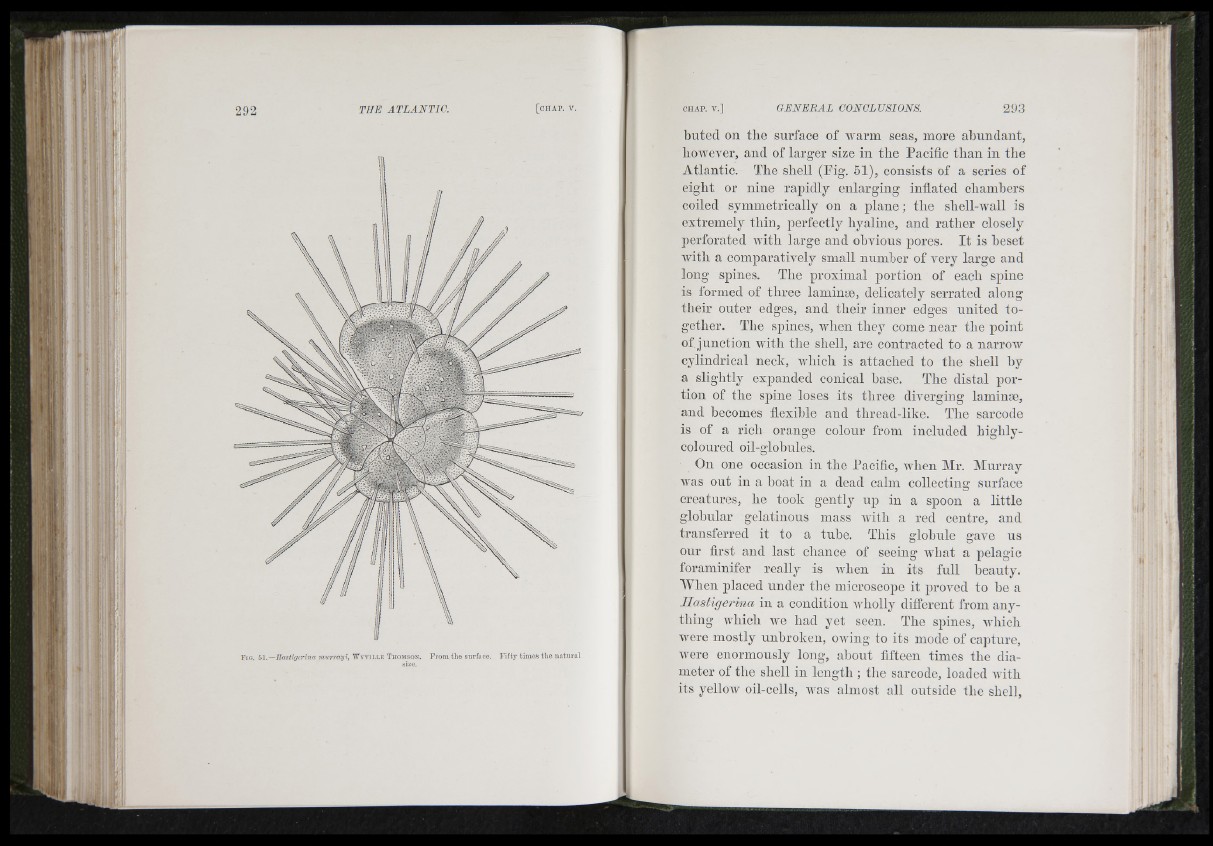
l!i
T'
ii I Ji ■
' If !l
II''!
F ig . b \.—Hastigerina mnrra.yi, W v t h . l e T h o m s o n . From the siiTfiice. Fifty times tlie niitural
size.
buted on tbe surface of warm seas, more abundant,
liowever, and of larger size in the Pacific than in the
Atlantic. The shell (Pig. 51), consists of a series of
eight or nine rapidly enlarging inflated chambers
coiled symmetrically on a plane; the shell-Avail is
extremely thin, perfectly hyaline, and rather closely
perforated Avith large and obvious pores. I t is beset
Avitb a comparatively small nnmber of very large and
long spines. Tbe proximal portion of each spine
is formed of three lamime, delicately serrated along
their outer edges, and their inner edges united to gether.
The spines, Avhen they come near the point
of junction Avith the shell, are contracted to a narroAV
cylindrical neck, AA'hich is attached to the shell hy
a slightly expanded conical hase. The distal portion
of the spine loses its three diverging laminae,
and becomes flexible and thread-like. The sarcode
is of a rich orange colour from included highly-
coloured oil-glohules.
On one occasion in the Pacific, Avlien Mr. Murray
was out in a boat in a dead calm collecting surface
creatures, he took gently up in a spoon a little
globular gelatinous mass Avith a red centre, and
transferred it to a tube. This globule gave us
our first and last chance of seeing Avbat a pelagic
foraminifer really is Avhen in its full beauty.
IVhen placed under the microscope it proved to he a
Hastigerina in a condition Avholly diiferent from anything
which Ave had yet seen. The spines, Avhich
were mostly unbroken, OAving to its mode of capture,
Avere enormously long, about fifteen times the diameter
of tbe sbell in lengtb ; tbe sarcode, loaded Avitb
its yelloAv oil-cells, Avas almost all outside tbe sbell.